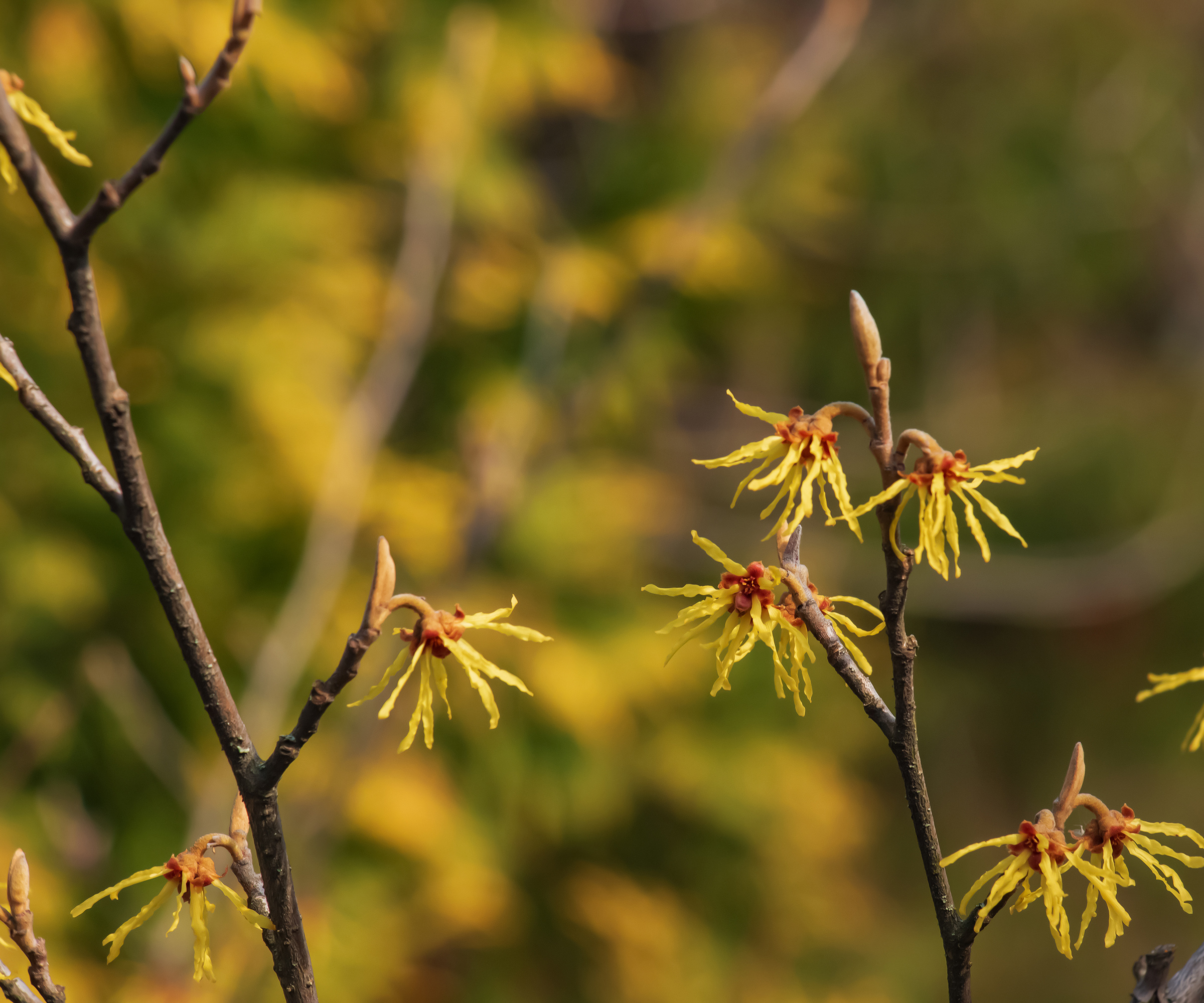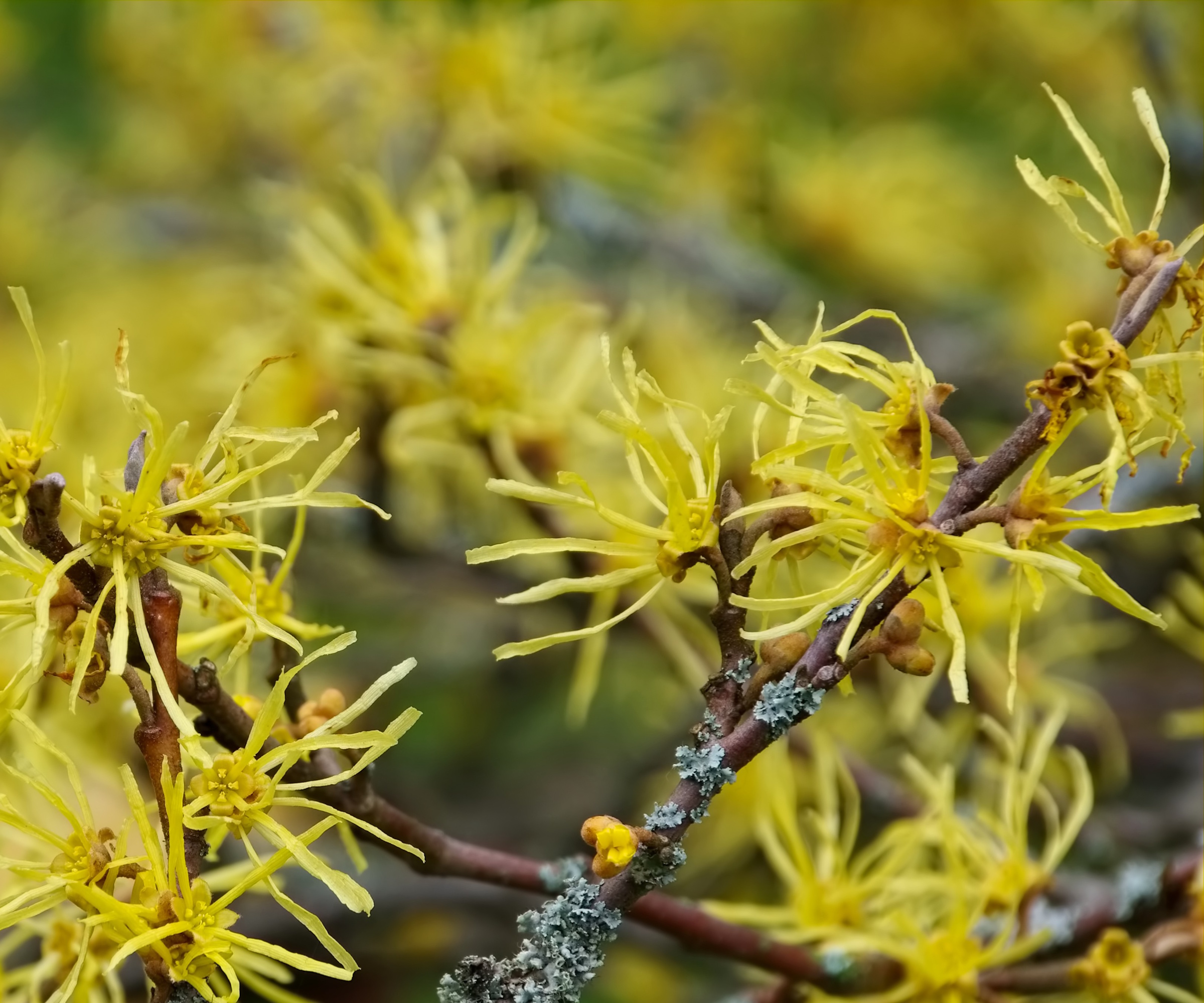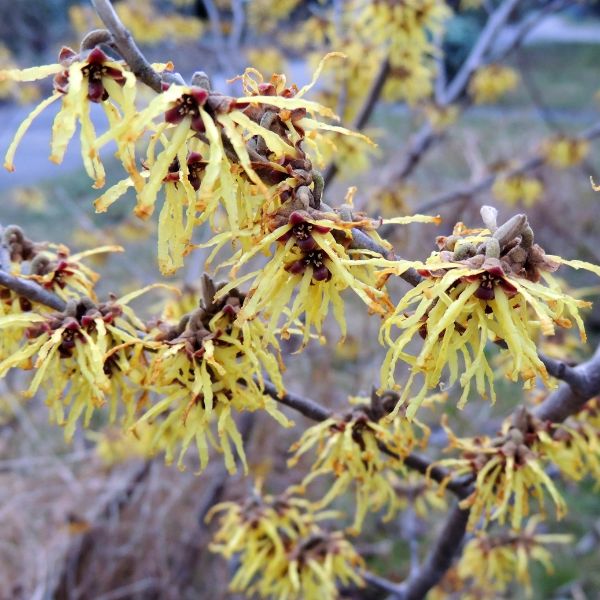How and when to fertilize witch hazel – experts reveal the secrets for vibrant and healthy flowering plants
Applying a small amount of fertilizer at the right time will give your shrubs a boost


Witch hazels are prized for their unexpected winter vibrancy. At a time when the air is cold, the soil is frozen and the sky is gloomy, witch hazels show remarkable resilience, producing spider-like blooms in a range of rich colors with spiced fragrance. What could be better?
Knowing when and when not to fertilize is important if you are fortunate enough to have one or several witch hazels, or Hamamelis. While they can thrive in poor soils with low nutrition, applying a small amount of feed at the right time and in the right way can give your plants a boost for the year ahead.
Here, one garden expert reveals how to fertilize witch hazel for optimal results. Whether you have a young plant or a gnarled, mature specimen, this guide will ensure that your witch hazel keeps producing unusual flowers for many years to come.

How and when to fertilize witch hazel
There are five beautiful witch hazel varieties, all identifiable by their unique blooms. While plant care will vary depending on what varieties you grow, most witch hazels are resilient woodland plants and can be grown down to US hardiness zone 3. In their native habitats, witch hazels grow in rich, loamy and moist ground, so feeding and conditioning backyard borders can help to mimic this fertile environment.
When to fertilize witch hazel

'In terms of when to fertilize shrubs and trees, timing is everything,' says Drew Swainston, former professional gardener and gardens content editor at Homes & Gardens. 'The opportune time to fertilize witch hazel is in spring, just as new growth begins to emerge but after flowering has finished.'
The flowering time will vary from species to species, with some witch hazels blooming during different seasons. Hamamelis mollis, also known as the Chinese witch hazel, flowers from December to March, whereas the American witch hazel, or Hamamelis virginiana, produces blooms during October, November or December.
'Regardless of the species you grow, the spring feeding schedule remains the same,' Drew says. 'Fertilizing at this time will support the formation of healthy new leaves and buds, just when the temperatures begin to increase and the gardening year gets underway.
Design expertise in your inbox – from inspiring decorating ideas and beautiful celebrity homes to practical gardening advice and shopping round-ups.
'One fertilizing mistake to avoid is feeding too late in the growing season,' Drew adds. 'Stick to a once-and-done approach each year, as feeding in the summer can encourage soft, tender growth that is susceptible to frost damage in fall and winter.'

Drew qualified as a journalist and wrote for many websites and publications, before studying for a horticulture qualification. He worked as a professional gardener for several years, specializing in kitchen gardening. He's now bringing his expertise and passion to Homes & Gardens as a member of our team.
How to fertilize witch hazel

The best thing you can do for your witch hazel plant is to condition the soil by mulching your borders every year. Mulching will improve the soil health and quality, suppress weeds and retain moisture for the year ahead.
Using something like this pine bark mulch from Walmart, apply a thick two to three-inch layer atop the soil. Older, established witch hazel plants can go without fertilizer for many years, although a good layer of mulch and some decomposing leaf matter will help to give them a boost.
In addition to mulching, you can apply some fertilizer in spring. This is particularly important for younger specimens that have been planted in the last five years, but all witch hazels will benefit from a light application of feed.
Choose a balanced, slow-release fertilizer, displaying equal plant fertilizer numbers such as 10-10-10 or 5-5-5, ideally on a product labeled for flowering trees or shrubs. Always follow the instructions as per the packaging, which will reveal how much to use and the process for applying.
For something like this Espoma organic tree fertilizer, available from Amazon, typically you would sprinkle the feed around the base of the plant, keeping a few inches away from the trunk. Alternatively, you could try these tree fertilizer spikes, available from Amazon. All you have to do is gently push one or two around the base of your plant - it really is that simple.
After fertilizing in early spring, water your witch hazel thoroughly to help the nutrients penetrate the soil. With proper feeding, your witch hazel should produce plenty of healthy growth during the year ahead.
FAQs
Do I need to feed witch hazels growing in pots?
If you grow witch hazel in pots, you must always remember to fertilize during spring. Any shrubs or trees that are grown in containers are dependent on you, the gardener, for their nutrition. Feeding once a year with a tree spike is recommended, but I would also suggest repotting your plants every two to three years to freshen the soil.
During spring, you may notice that your witch hazel is producing new shoots or suckers from the base of the trunk. This is just a sign that your tree is doing well, but it is important to cut these shoots back on a regular basis. You want to encourage the plant to expend its energy on the existing canopy and maintain the desired shape, so removing any basal growth is an important task to add to your spring gardening checklist.
For more inspiration, see our guide on how to fertilize Japanese maples, to keep your decorative trees in good health this year.

Thomas is a Content Editor within the Gardens Team at Homes and Gardens. He has worked as a professional gardener for both public spaces and private estates, specializing in productive gardening, growing food and flowers. Trained in Horticulture at the Garden Museum, he has written on gardening and garden history for various publications, including The English Garden, Gardens Illustrated, Hortus, The London Gardener and Bloom. He has co-authored a Lonely Planet travel book, The Tree Atlas, due out in 2024.
